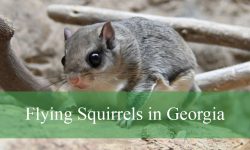Texas features a variety of deer species due to its vast and varied landscapes. From thick forests and dense brush to open grasslands and rugged mountains, the state provides ideal habitats for different types of deer. Learning about these species helps reveal the richness and diversity of wildlife that Texas has to offer.
Deer in Texas vary widely in size, appearance, and behavior. Some species like the White-tailed Deer are found throughout much of the state, while others such as the Mule Deer and Black-tailed Deer prefer specific western regions. Each type of deer has adapted to thrive in its particular environment, offering fascinating differences to explore.
This article introduces five common types of deer in Texas, complete with detailed descriptions and identification tips. For hunters, wildlife enthusiasts, and nature lovers alike, learning about these deer enhances the connection to Texas’s natural heritage.
Common Deer Found in Texas
White-tailed Deer (Odocoileus virginianus)
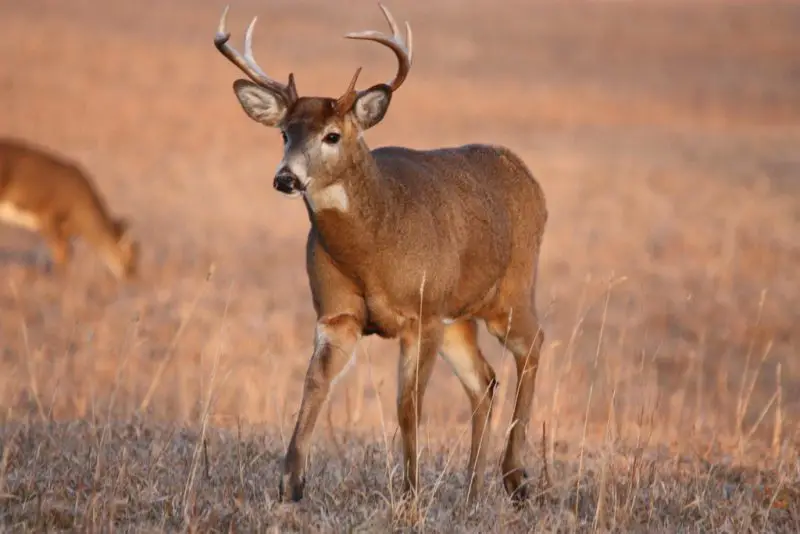
The White-tailed Deer is the most common and widespread deer species in Texas, easily recognized by the distinctive white underside of its tail, which it raises like a flag when alarmed. Its coat is typically reddish-brown in the summer, changing to a duller grayish-brown in the winter to provide camouflage. Adult bucks grow antlers that shed and regrow each year, usually branching out with multiple points. They have a slender yet muscular build, with large dark eyes and ears that swivel to detect sounds.
White-tailed Deer are highly adaptable and occupy a variety of habitats, including forests, grasslands, brushy areas, and farmland. Their diet consists mainly of leaves, twigs, fruits, nuts, and grasses. They are crepuscular, being most active during early morning and late evening hours to avoid the heat of the day. White-tailed Deer are known for their cautious behavior, often using dense vegetation for cover and relying on their keen senses to evade predators.
In Texas, White-tailed Deer thrive throughout most of the state, from East Texas pine forests to the hill country and South Texas brushlands. They are especially abundant in areas with a mix of open fields and wooded cover, which provide both food and shelter. This adaptability to diverse environments has made the White-tailed Deer a staple species in Texas wildlife and popular among hunters.
White-tailed Deer are social animals, often forming small family groups composed of does and their young, while mature bucks tend to be more solitary except during the breeding season, known as the rut. During the rut, males become more vocal and engage in antler wrestling to establish dominance and mating rights. Their reproductive cycle and population dynamics are closely tied to environmental conditions and hunting pressure in the state.
Mule Deer (Odocoileus hemionus)
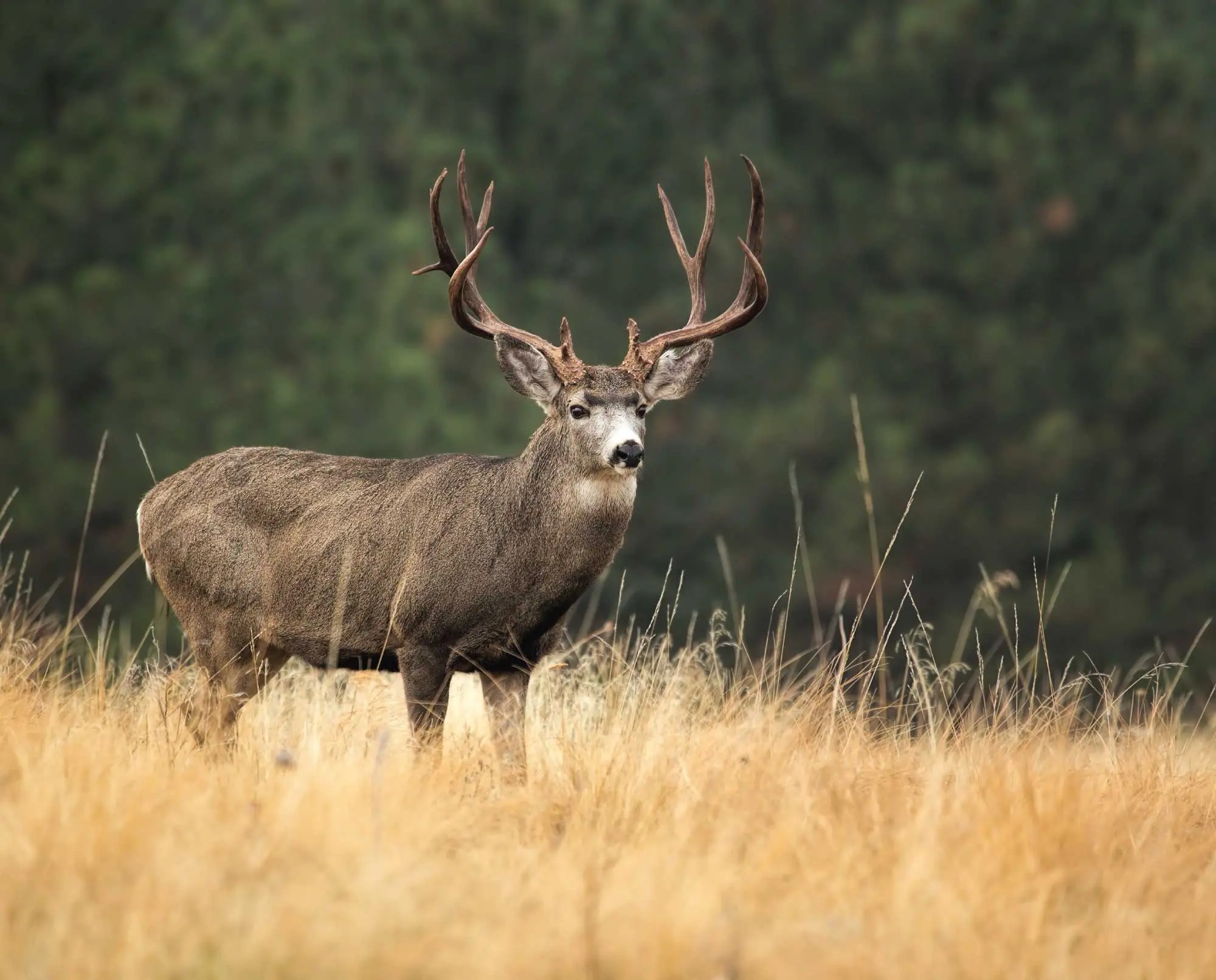
Mule Deer are characterized by their large, mule-like ears, which are longer than those of the White-tailed Deer, and a distinctive black-tipped tail. Their coat is generally a grayish-brown color, providing excellent camouflage in the rocky and arid environments they prefer. Bucks have large antlers that typically fork rather than branch, with a more rugged appearance compared to White-tailed Deer antlers.
In Texas, Mule Deer primarily inhabit the western and northern regions, including the Trans-Pecos area and the Panhandle. They favor open, rugged terrain such as deserts, foothills, and brush-covered slopes. Their diet is highly varied but mainly consists of shrubs, leaves, grasses, and forbs. Unlike White-tailed Deer, Mule Deer often browse on more sparse vegetation, adapting well to harsher environments.
Behaviorally, Mule Deer are more solitary or found in small groups. They are crepuscular and well adapted to escape predators by using their strong hind legs to bound away in quick, erratic leaps. This species is also known for their keen eyesight and alertness, often using elevated terrain to scan for danger. Their breeding season occurs in late autumn, with does typically giving birth to one or two fawns in the spring.
Mule Deer populations in Texas have faced challenges due to habitat loss and competition with livestock, but conservation efforts have helped maintain stable numbers in their preferred western range. Their presence adds ecological diversity to Texas’ deer fauna, and they are an important species for hunters and wildlife watchers interested in the state’s desert and mountainous ecosystems.
Coues Deer (Odocoileus virginianus couesi)

The Coues Deer is a smaller subspecies of the White-tailed Deer found mainly in the southernmost parts of Texas, particularly in the dense brushlands and thorny scrub near the Rio Grande Valley. They are distinguished by their relatively small size, shorter legs, and lighter build compared to typical White-tailed Deer. Their coat tends to be lighter gray-brown, adapted for camouflage in the thorny brush habitat.
Coues Deer are highly secretive and well adapted to the dense, thorny environments they inhabit. Their diet primarily includes browse such as leaves, fruits, and small branches from shrubs and brush plants. These deer tend to be most active during dawn and dusk, using dense cover for protection during daylight hours. They are capable of moving swiftly and quietly through thick brush to avoid predators.
In Texas, Coues Deer are limited to the Lower Rio Grande Valley and surrounding brush country, making them less widespread but locally common in these areas. They thrive in brushy, thorny habitats where few other deer species are found, and their presence is a vital part of the ecological balance in these semi-arid regions.
Behaviorally, Coues Deer tend to form small groups or be solitary. Their breeding season aligns with other White-tailed Deer, with does giving birth in the spring. Because of their remote and challenging habitat, Coues Deer are less studied but are prized by hunters and conservationists alike for their unique adaptations and localized presence in Texas.
Axis Deer (Axis axis)
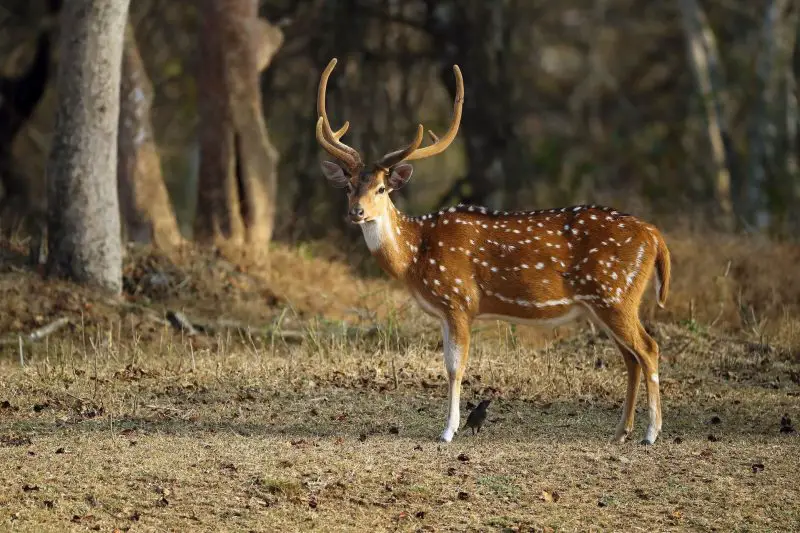
Axis Deer, also known as Chital Deer, are non-native to Texas but have established populations primarily on large private ranches and game reserves. Originating from the Indian subcontinent, these deer are easily identified by their reddish-brown coat adorned with white spots arranged in rows along their sides, which remain visible even into adulthood. They have slender bodies, long legs, and distinctive lyre-shaped antlers on males.
These deer prefer open woodlands, grasslands, and areas with scattered trees where they can graze on grasses, browse shrubs, and eat fruits. They are mostly active during the cooler parts of the day, such as early morning and late afternoon. Axis Deer are social animals that form large herds, which helps provide safety in numbers from predators.
In Texas, Axis Deer populations exist mainly in South and Central Texas on ranches that manage them for hunting and wildlife viewing. Although not native, they have adapted well to Texas’ climate and habitats and are considered a valuable exotic species in the state’s game management community. They are sometimes seen in mixed herds with native White-tailed Deer but do not hybridize with them.
Behaviorally, Axis Deer are less wary than native species, often showing more curiosity around humans. They have a breeding season that can occur twice a year in Texas, contributing to their population growth. Axis Deer add a unique exotic element to Texas’ deer fauna and attract attention from hunters and wildlife enthusiasts interested in non-native species.
Black-tailed Deer (Odocoileus hemionus columbianus)
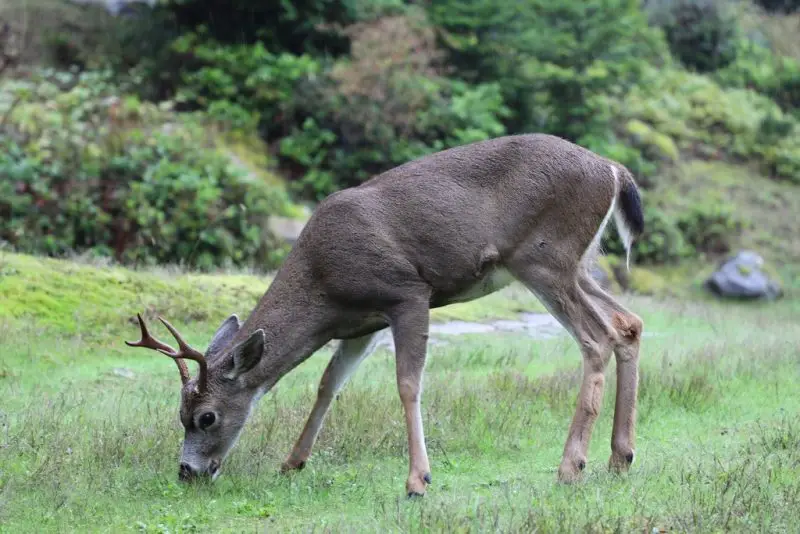
The Black-tailed Deer is a subspecies of Mule Deer that is rare in Texas but can be found in some western parts of the state, particularly in mountainous or forested areas near the New Mexico border. As their name suggests, they have a distinct black tail contrasting with the white underside, which helps distinguish them from other deer.
These deer have a stocky build and grayish-brown fur that changes seasonally for camouflage. Their antlers resemble those of the Mule Deer but tend to be slightly smaller and more compact. Black-tailed Deer are well adapted to cooler and more rugged habitats, including forested slopes and high elevations.
In Texas, Black-tailed Deer are less common than other deer species and have a limited range in the far western mountainous regions. They prefer mixed conifer forests and steep terrain, where they browse on shrubs, grasses, and forbs. Their shy nature and the remote areas they inhabit make them less visible to most residents.
Behaviorally, Black-tailed Deer tend to be solitary or found in small family groups. They are crepuscular and use their agility and speed to evade predators. Their breeding season occurs in the fall, and females give birth to one or two fawns in spring. Though not abundant, Black-tailed Deer contribute to the biodiversity of Texas’ western ecosystems and are of interest to conservationists monitoring range expansions.
Where and When to Find Deer in Texas and Hunting Tips
Deer in Texas can be found throughout the state, but their distribution varies depending on the species and habitat preferences. White-tailed Deer are widespread and commonly found in East Texas forests, South Texas brushlands, and Central Texas woodlands. Mule Deer and Black-tailed Deer are more often located in the western and northern parts of Texas, especially in rocky, arid, or mountainous areas. Coues Deer are mostly limited to the southern brush country near the Rio Grande Valley, while Axis Deer are primarily found on private ranches and game reserves.
The best times to observe or hunt deer in Texas are during the cooler months, especially in the fall and early winter, when deer are more active during daylight hours. The rutting season, typically from late October through December, is when bucks are most active and visible as they search for mates. Early mornings and late afternoons are peak activity periods, so planning outings around these times increases the chances of spotting deer.
For hunters, understanding local regulations and securing proper licenses is essential. Using scent control and wearing camouflage that matches the surrounding habitat can improve success. Additionally, scouting areas ahead of the season to identify trails, feeding areas, and bedding spots is key. Respecting wildlife and following ethical hunting practices ensures sustainable deer populations for future generations in Texas.


